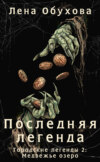Czytaj książkę: «Blackwoods Edinburgh Magazine – Volume 53, No. 332, June, 1843»
MARSTON; OR, THE MEMOIRS OF A STATESMAN
PART I
"Have I not in my time heard lions roar?
Have I not heard the sea, puft up with wind,
Rage like an angry boar chafed with sweat?
Have I not heard great ordnance in the field,
And heaven's artillery thunder in the skies?
Have I not in the pitched battle heard
Loud 'larums, neighing steeds, and trumpets clang?"
SHAKSPEARE
Why I give the world a sketch of my career through it, is not among the discoveries which I intend to make. I have been a public man; let those who know public life imagine what interest may be felt in reviewing the scenes and struggles of which such a life is full. May there not be a pleasure in conceiving once again the shapes and circumstances of things, as one sitting by his fireside sees castles and cottages, men, women, and children in the embers, and shapes them the better for the silence and the solitude round him? Let the reader take what reason he will. I have seen the world, and fought my way through it; have stumbled, like greater men, have risen, like lesser; have been flung into the most rapid current of the most hurried, wild, and vivid time that the world has ever seen—I have lived through the last fifty years. In all the vigour of my life, I have mingled in some of the greatest transactions, and been mingled with some of the greatest men, of my time. Like one who has tumbled down Niagara, and survived the fall, though I have reached still water, the roar of the cataract is yet in my ears; and I can even survey it with a fuller gaze, and stronger sense of its vastness and power, than, when I was rolling down its precipice.
I have been soldier, adventurer, traveller, statesman. I have been lover, husband, father—poor and opulent; obscure and conspicuous. There are few sensations of our nature, or circumstances of our life, which I have not undergone. Alternately suffering to the verge of ruin, and enjoying like an epicurean deity: I have been steeped in poverty to the lips; I have been surcharged with wealth. I have sacrificed, and fearfully, to the love of power; I have been disgusted with its possession. I figured in the great Babel until I loved even its confusion of tongues; I grew weary of it, until I hated the voice of man.
Every man is born for a special purpose, and with a special passion. The multitude, possessing both, exhibit neither; they are flung, or choose to be flung, into the pond, where they float only to perish, like blind puppies. But there are others who stem the great tide, and are only the stronger for the struggle. From my first sense, the passion to be known and felt, nay, at the expense of being feared, was my impulse. It has been the impulse of all men who have ever impressed the world. With great talents it is all-commanding: the thunderbolt in the hands of Jove. Even with inferior faculties, and I make no pretence of mine, it singularly excites, urges, and animates. When the prophet saw the leopard winged, he saw a miracle; I claim for my powers only those of the muscle and sinew.
Ambition was the original passion of my nature. It rose before me, as the sun ascends before the Indian, until its fire drives him to the shade. I, too, have been scorched, have shrunk, and now I regret my shrinking. But time deals alike with all. I can now amuse myself only by images of the past; and, in the darkness and solitude of years, I take their Magic Lantern, and replace life by the strange, wild, and high-coloured extravagances, the ghosts and genii of the phantasmagoria of ambition.
I was the seventh son of one of the oldest families of England. If I had been the seventh son of the seventh son, I should, by all the laws of juggling, have been a conjurer; but I was a generation too early for fame. My father was an earl, and as proud of his titles as if he had won them at Crecy or Poictiers, and not in the campaigns of Westminster, consummated on the backstairs of Whitehall. He had served his country, as he termed it, in a long succession of Parliaments; and served her still more, as his country neighbours termed it, by accepting a peerage, which opened the county to any other representative among the sons of men. He was a strong-built, stern-countenanced, and haughty-tongued personage—by some thought a man of sense; by others a fool, with all his depth, arising from his darkness. My own experience convinced me, that no man made more of a secret, or thought less of a job. From my boyhood I own I feared more than honoured him; and as for love, if I had been more susceptible, mine would have flown round the globe before it could have fixed on that iron visage. The little love that I could afford for any human being, was for another and a different order of existence. Boys have a natural fondness for the mother; and mine was gentle, timid, and fond. She always parted with me, on my going to school, as if she had lost a limb, and when I returned, received me as if she had found a pinion in its place. She perhaps spoiled me by indulgence, as much as my lord and father spoiled me by severity; but indulgence is the pleasanter of the two, and I followed the course of nature, and gave her whatever heart I have. I still remember her. She was remarkably indebted to nature, at least for externals. She had fine eyes—large, dark, and sentimental; her dress, which would now be preposterous, seemed to me, then, the perfection of all taste, and was in the highest fashion of her time. Her beauty worked miracles; for now and then I have observed even my father's eye fixed on her, with something of the admiration which we might conceive in an Esquimaux for a fixed star, or in an Italian highwayman for some Parian statue which he had stumbled on in his thickets. But the admiration was soon absorbed in the job in hand, and he turned away—to scribble to the Minister. Of the younger portion of the family I shall say but little. Children are happiest in the nursery, and there I leave them. I had two sisters, sweet little creatures, one with black eyes and the other with blue. This is enough for their description. My four brothers were four rough, bold, well-looking animals, all intended for ambassadors, admirals, generals, and secretaries of state—for my father had too long tasted of the honey of official life to think that there was any other food for a gentleman in the world. He had been suckled for too many years at those breasts, which, like the bosom of the great Egyptian goddess, pour the stream of life through whole generations of hangers-on, to believe that any other fount of existence was to be named but the civil list. I am strongly inclined to surmise that he would have preferred a pencil, purloined from the Treasury, to all the cedars of Lebanon.
It may be presumed that I was destined for public life—in other words, to live on the public; and, to prepare me for the performance of a part, alternately menial and master—supple as the slave, and superb as the minister—I was sent to Eton. At this great school of the aristocracy, would-be and real—barons and dukes in esse, and the herald's office alone, or bedlam, knows what in posse, I remained for the customary number of years. If whoever does me the honour to read these pages, hates the history of schooldays as much as I do their memory, he will easily pardon my passing by the topic altogether. If the first purpose of all great public institutions is to stand still; the great schools of England, fifty years ago, were righteous adherents to their contract; they never moved. The world might whirl round them as it would; there remained the grey milestones, only measuring the speed with which every thing on the road passed them. This, they say, has largely and fortunately changed in later years. But the change must proceed; the venerable cripples must throw by their crutches, and try the effect of flesh and blood. Flogging and fagging, are the education for a footman; they disgrace the common sense, and offend the feelings of a manly people. The pugilist must be expelled, and the puppy must follow him. The detestable grossness of classical impurity, must be no longer the price at which Latin "quantities" are to be learned. The last lesson of the "prodigal son," must not be the first learned by the son of the gentleman of England—to be fed on the "husks" fit only for the swine.
On my delighted release from this supreme laboratory of statesmen, I found the state of things considerably altered at Mortimer Castle. I had left it a stately but rather melancholy-looking household; I found the mansion glittering in all the novelty of French furniture, gilding, and or-molu—crowded with fashion, and all its menial tribe, from the groom in the stables to the gentleman's gentleman, who slipped along the chambers in soft silence, and seemed an embodying of Etiquette, all in new equipments of all kinds—the avenue trimmed, until it resembled a theatrical wood; and the grounds, once sober and silent enough for a Jacques to escape from the sight of human kind, and hold dialogues with the deer; now levelled, opened, shorn, and shaved, with the precision of a retired citizen's elysium.
The heads of the family were equally changed; my mother, unhappily, for the worse. Her fine eyes beamed with joy as she threw herself upon my neck, and murmured some of those mingled blessings and raptures which have a language of their own. But when the first flush was past, I perceived that the cheek was thin, the eye was hollow and heavy, and the tremulous motion of her slight hand, as it lay in mine, alarmed me; in all my ignorance of the frailty of the human frame. But the grand change was in the Earl. My father, whom I had left rather degenerating into the shape which three courses and a bottle of claret a-day inflict on country gentlemen "who live at home at ease," was now braced and laced, costumed in the newest fashion, and overflowing with exuberant volatility. He breathed of Bond Street. He welcomed me with an ardour which astonished, more than delighted, me; Talked fragments of French, congratulated me on my "air distingué," advised me to put myself "en grande tenue;" and, after enchanting me in all kinds of strange ways, concluded by making an attempt to kiss me on both cheeks, like a true Frenchman. My Eton recollections enabled me to resist the paternal embrace; until the wonder was simplified, by the discovery that the family had but just returned from a continental residence of a couple of years—a matter of which no letter or word had given me the knowledge at my school. My next discovery was, that an old uncle had died, and left us money enough to carry the county; and the last and crowning one was, that my eldest brother had just been returned for the North Riding.
This was such an accumulation of good-luck as might have thrown any elderly gentleman off the balance of his gravity. It was like Philip's three plates at the Greek horse-races, crowned by the birth of Alexander. If my lordly father had danced the "Minuette de la Cour" over the marble tesselation of his own hall, I should now not have been surprised. But, from my first sense, or insensibility, I had felt no great delight in matters which were to make my own condition neither better nor worse; and after a remarkably brief period, the showy déjeûnés and dinners which commemorated the triumphs of the heir-apparent of our house, grew tiresome to me beyond all count, and I openly petitioned to be sent to college, or to the world's end.
My petition was listened to with a mixture of contempt for my want of taste, and astonishment at my presumption. But before the reply had time to burst out from lips, at no time too retentive, I was told, that at the end of one week more I should be suffered to take my way; that week being devoted to a round of especial entertainments in honour of my brother's election; the whole to be wound up by that most preposterous of all delights, an amateur play.
To keep a house in commotion, to produce mysterious conversations, conferences without number, and confidences without end; and to swell maidens' hearts and milliners' bills, let me recommend an amateur play in the country. The very mention of it awoke every soul in the Castle; caps and complexions were matched, and costumes criticised, from morning till night, among the ladies. The "acting drama" was turned over leaf by leaf by the gentlemen. The sound of many a heavy tread of many a heavy student, was heard in the chambers; the gardens were haunted by "the characters" getting their parts; and the poet's burlesque of those who "rave, recite, and madden round the land," was realized to the life in the histrionic labours of the votaries of Thalia and Melpomene, who ranged the groves of Mortimer Castle.
Then we had all the charming difficulty of fixing on the play. The dullest and dreariest of our country Rosciuses were uniformly for comedy; but the fair sex have a leaning to the tragic muse. We had one or two, who would have had no objection to be piquant in Lady Teazle, or petulant in Lady Townley; but we had half a dozen Desdemonas and Ophelias. The soul of an O'Neil was in every one of our party conscious of a pair of good eyes, a tolerable shape, and the captivation which, in some way or other, most women in existence contrive to discover in their own share of the gifts of nature. At length the votes carried it for Romeo and Juliet. The eventful night came; the élite of the county poured in, the theatre was crowded; all was expectancy before the curtain; all was terror, nervousness, and awkwardness behind. The orchestra performed its flourish, and the curtain rose.
To do the heads of the household justice, they had done their duty as managers. The theatre, though but a temporary building, projecting from the ball-room into one of the gardens, was worthy of the very handsome apartment which formed its vestibule. The skill of a famous London architect had been exerted on this fairy erection, and Verona itself had, perhaps, in its palmiest days, seldom exhibited a display of more luxuriant elegance. The audience, too, so totally different from the mingled, ill-dressed, and irregular assemblage that fills a city theatre; blooming girls and showy matrons, range above range, feathered and flowered, glittering with all the family jewels, and all animated by the novelty of the scene before them, formed an exhibition which, for the night, inspired me with the idea, that (strolling excepted) the stage might not be a bad resource for a man of talents, after all.
But the play was—must I confess it? though I myself figured as the Romeo—utterly deplorable. The men forgot their parts, and their casual attempts to recover them made terrible havoc of the harmony of Shakspeare. The ladies lost their voices, and carried on their loves, their sorrows, and even their scoldings, in a whisper. Our play perfectly deserved the criticism of the old gentleman, who, after a similar performance, being asked which of the personages he liked best, candidly replied, "the prompter, for of him he had heard the most and seen the least."
However, every thing has an end; and we had carried Juliet to the tomb of all the Capulets, the chant was done, and the mourners were gathered in the green-room. I was standing, book in hand, preparing for the last agonies of a love very imperfectly committed to memory, when I heard a slight confusion in the court-yard, and shortly after the rattle of a post-chaise. The sound subsided, and I was summoned to my post at the entrance to the place where the lovely Juliet lay entranced. The pasteboard gate gave way to knocks enforced with an energy which called down rapturous applause; and in all the tortures of a broken heart, rewarded by a profusion of handkerchiefs applied to bright eyes, and a strong scent of hartshorn round the house, I summoned my fair bride to my arms. There was no reply. I again invoked her; still silent. Her trance was evidently of the deepest order. I rose from the ground, where I had been "taking the measure of my unmade grave," and approaching the bier, ventured to drop a despairing hand upon her pillow. To my utter surprise, it was vacant. If I had been another Shakspeare, the situation was a fine one for a display of original genius. But I was paralyzed. A sense of the general embarrassment was my first impression, and I was absolutely struck dumb. But this was soon shaken off. My next was a sense of the particular burlesque of my situation; I burst out into laughter, in which the whole house joined; and throwing down my mattock, rushed off the stage. My theatrical dream was broken up for ever.
But weightier matters now absorbed the universal interest. The disappearance of the heroine from the stage was speedily accounted for by her flight in the carriage whose wheels had disturbed my study. But where fled, why, and with whom? We now found other defalcations in our numbers; the Chevalier Paul Charlatanski, a gallant Polish exile, who contrived to pass a very pleasant time on the merit of his misfortunes, a man of enormous mustaches and calamities, was also missing. His valet, his valise, every atom that ever appertained to him, had vanished; the clearance was complete. The confusion now thickened. I never saw the master of the mansion in such a rage before. Pistols and post-chaises were in instant requisition. He vowed that the honour of his house was involved in the transaction, and that nothing should tempt him to slumber until he had brought the fugitive fair one to the arms of her noble family; my Juliet being the ward of a duke, and being also entitled to about twenty thousand pounds a-year on her coming of age.
As for the unlucky, or rather the lucky, Chevalier, nothing human ever received a hotter shower of surmise and sarcasm. That he was "an impostor, a swindler, a spy," was the Earl's conviction, declared in the most public manner. The whole body of matrons looked round on their blooming innocents, as if they had been snatched from the jaws of a legion of wolves and thanked their own prudence which had not trusted those men of mustaches within their hall doors. The blooming innocents responded in filial gratitude, and, with whatever sincerity, thanked their stars for their fortunate escape.
Still, the Earl's indignation was of so ultra a quality; his revenge was so fiery, and his tongue so fluent; that I began to suspect he had other motives than the insulted laws of hospitality. I reached this discovery, too, in time. The declining health of his partner had made him speculate on the chances of survivorship. He certainly was no longer young, and he had never been an Adonis. Yet his glass did not altogether throw him into the rank of the impracticable. A coronet was a well-known charm, which had often compensated for every other; in short, he had quietly theorized himself into the future husband of the ducal ward; and felt on this occasion as an Earl should, plundered, before his face, of a clear twenty thousand a-year.
But he was not to suffer alone. On further enquiry, it was ascertained that the chevalier's valet had not gone with him. This fellow, a Frenchman, had taken wing in another direction, and carried off his turtle-dove, too; not one of the full-blown roses of the servant's-hall, but a rosebud, the daughter of one of the bulkiest squires of the Riding; a man of countless beeves and blunders; one of our Yorkshire Nimrods, "a mighty hunter," until club dinners and home-brewed ale tied him to his arm-chair, and gout made him a man of peace and flannels, the best thriven weed in the swamps of Yorkshire. The young lady had been intended for my eldest brother, as a convenient medium of connexion between two estates, palpably made for matrimony. Thus we received two mortal blows in one evening; never was family pilfered more ignominiously; never was amateur play more peevishly catastrophized.
It must be owned, to the credit of "private theatricals," that the play had no slight share in the plot. The easy intercourse produced by rehearsals, the getting of tender speeches by heart, the pretty personalities and allusions growing out of those speeches, the ramblings through shades and rose-twined parterres, the raptures and romance, all tend prodigiously to take off the alarm, or instruct the inexperience, of the female heart. I know no more certain cure for the rigidity that is supposed to be a barrier. At all events, the Chevalier and his valet, probably both footmen, alike had profited of their opportunity. Our play had cost us two elopements; two shots between wind and water, which threatened to send the ship down; two breakings of that heart which men carry in their purse. I laughed, and the world laughed also. But I was then thoughtless, and the world is malicious. My father and the member, though they had "never told their love," felt the blow "like a worm in the bud," and from that night I date the family decline.
Of course, the two whiskered vagabonds could not be suffered to carry off their laurels without an attempt to diminish them, and my father and brother were too much in earnest in their objects to lose time. In half an hour, four post-horses to each britchska whirled them off;—my father, to take the northern road, some hints of Gretna having transpired in the slipshod secrecy of the servants' hall—my brother, to pursue on the Dover road, conjecturing, with more sagacity than I had given him credit for, that as the fox runs round to his earth, the Frenchman always speeds for Paris.
The company soon dispersed, after having stayed long enough to glean all that they could of the family misfortune, and fix appointments for every day in the week to meet each other, and make the most of the whole transaction. But still a tolerable number of the steadier hands remained, who, to show their sympathy with us, resolved not to separate until they received tidings of his lordship's success. I was voted to the head of the table, more claret was ordered, the wreck of the general supper was cleared for one of a snugger kind; and we drew our chairs together. Toast followed toast, and all became communicative. Family histories, not excepting our own, were now discussed, with a confidence new to my boyish conjectures. Charlatanski's career abroad and at home seemed to be as well known as if he had been pilloried in the county town; the infinite absurdity of the noble duke who suffered him to make his way under his roof, and the palpable penchant of his ward, next underwent discussion; until the ignorance of my noble father on the subject, gave, with me, the death-blow to his penetration. The prettinesses which had won the primrose heart of my brother's intended spouse, I found were equally notorious; the Earl's project was as plain as if he had pronounced it viva voce; and before we parted for the night, which did not occur until the sun was blazing through the curtains of our banqueting room, I had made up my mind, once for all, that neither character nor cunning can be concealed in this world; that the craftiest impostor is but a clumsier kind of clown; and that the most dexterous disguise is but a waste of time.
I must hasten to the dénouement. Our excellent friends indulged us with their company, and bored us with their society for a mortal week. But, as Sterne says of the sentimental traveller, scenes of sentiment are always exhibiting themselves to an appetite eager for knowing what the world is doing; the knowledge was contributed with a copiousness which left nothing to learn, and but little to desire. Our guests were of that class which usually fills the houses of noblemen, in the annihilation of life in town; clubmen, to whom St James's Street was the terraqueous globe; guardsmen, on leave of absence for the shooting season, and saturated with London; several older exhibitors in the fashionable circles, who as naturally followed where young guardsmen and wealthy squires were to be found, as flies wing to the honey on which they live; and two or three of the most opulent and dullest baronets who ever played whist and billiards, for the advantage of losing guinea points to gentlemen more accomplished in the science of chances.
At length, on the sixth day, when I really began to feel anxious, an express announced that his lordship had arrived at a village, about fifty miles off, on his way home, wounded, and in great danger. I instantly broke up the convivial party, and set out to see him. To the imagination of a boy, as I was then, nothing could be more startling than the aspect of the habitation which now held the haughty Earl of Mortimer. After passing through a variety of dungeon-like rooms, for the house had once been a workhouse, or something of the kind, I was ushered into the chamber where the patient lay. The village doctor, and one or two of the wise people of the neighbourhood, who thought it their duty to visit a stranger, that stranger being a man of rank, were standing by; and the long faces of those persons, seconded by the professional shake of the doctor's head, told me, that they at least had no hope. It was not so with the sufferer himself, for he talked as largely and loftily of what he was to do within the next ten years, as if he was to survive the century. He still breathed rage and retribution against the Chevalier, and actually seemed to regard the lady's choice as a particular infraction of personal claims. He had pursued the fugitives day and night, until the pursuit threw him into a kind of fever. While under this paroxysm he had met the enamoured pair, but it was on their way from that forge on the Border where so many heavy chains have been manufactured. Useless as challenging was now, he challenged the husband. The parties met, and my father received a bullet in his body, while he had the satisfaction of lodging one in his antagonist's knee-pan. The Chevalier was doomed to waltz no more. But his bullet was fatal.
As I looked round the wretched chamber in which this bold, arrogant, and busy spirit was evidently about to breathe its last, Pope's lines on the most splendid roué of his day involuntarily and painfully shot across my recollection:—
"In the worst inn's worst room, with mat half hung,
The walls of plaster, and the floor of dung;
The George and Garter dangling from the bed,
Where tawdry yellow strove with dirty red,
Great Villiers lies; alas, how changed from him
The glass of fashion!"
I say no more of those scenes; a few days, only enough to collect the branches of the family round the bed, terminated every thing. Grief, they say, cannot exist where there is no love, but I was not inclined, just then, to draw subtle distinctions. I was grieved; and paid the last duties, without blame to myself, or, I hope, irreverence in the sight of others. The funeral was stately, and all was over.
Matters now took a new shape at the castle. My brother returned, to find himself its possessor. His journey had been equally unproductive with my unfortunate father's. By dint of bribing the postilions, he had even overpassed the fugitives on the Dover road. But, as he stopped to dine in Canterbury, where he had prepared a posse of constables for their reception, he had, unluckily, been accosted by an old London acquaintance, who had accidentally fixed his quarters there for a day or two, "seeking whom he might devour." The dinner was followed by a carouse, the carouse by a "quiet game," or games, which lasted till the next day; and when my brother rose, with the glow of a superb sunset giving him the first intimation that he was among the living, he made the discovery that he was stripped of the last shilling of five hundred pounds, and that the Frenchman and his prize had quietly changed horses at the same hotel half a dozen hours before.
The young forget quickly, but they feel keenly. The event which I had just witnessed threw a shade over me, which, in the want of any vigorous occupation, began to affect my health. I abjured the sports of the field, for which, indeed, I had never felt much liking. I rambled through the woods in a kind of dreamy idleness of mind, which took but little note of any thing, time included. As mendicants sell tapes and matches to escape the imputation of mendicancy, I carried a pencil and portfolio, and seemed to be sketching venerable oaks and patches of the picturesque, while my mind was wandering from Line to Pole. But in this earth no one can be singular with impunity. The gentlemen were "convinced" that my meditations were heavy with unpaid college bills; and the ladies, from high to low, from "Tilburina, mad in white satin," to her "confidant, mad in white linen," were all of opinion that some one among their peerless selves had destroyed the "five wits of young Mr Marston." I could have fallen on them with a two-handed sword; but as the massacre of the sex was not then in my power, I had only to escape.
There were higher matters to move me. Clouds were gathering on the world; the times were fitful; the air was thick with rumours from abroad; the sleep of the Continent was breaking up, and Europe lay in the anxious and strange expectancy in which some great city might see the signs of a coming earthquake, without the power of ascertaining at what moment, or from what quarter, its foundations were to be flung up in sight of the sun.—We were then in the first stage of the French Revolution!
I resolved to linger and be libelled no more; and being ushered, by appointment, into the library—for the new master was already all etiquette—I promptly stated my wishes, and demanded my portion, to try my fortune in the world.
Our conference, if it had but little of the graces of diplomacy, had much more than its usual decision. It was abrupt and unhesitating. My demand had evidently taken his "lordship" by surprise. He started from the magisterial chair, in which he was yet to awe so many successions of rustic functionaries, and with a flushed cheek asked "Whether I was lunatic, or supposed him to be so?"




















